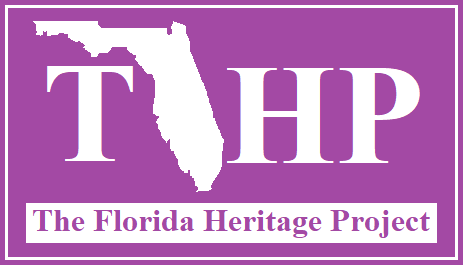

"In the year 1513, the first Africans arrived in Florida with Spanish explorer Juan Ponce de León, the first European to lay claim to Florida."
"In 1559, eleven ships brought 1,500 people from Veracruz, Mexico, which then became the indigenous laborers that helped build what is now known as Pensacola in Florida."
"The first Greek Orthodox Christians arrived in the New World in 1768, establishing a colony near the present city of St. Augustine, Florida."
"In 1805 thru 1816 there was increasing friction between white settlers, Florida Indians and the Creek Confederation. The Seminoles began hiding runaway slaves who had escaped from southern plantations into Spanish Florida."
"On November 21, 1817, General Gaines sent 250 men from Fort Scott in Georgia to arrest Chief Neamathla; gunfire was exchanged thus starting the beginning of the First Seminole Indian War."
"The Cuban cigar industry first came to Florida in the 1830s. Large Cuban communities developed in Ybor City and Key West by the late 1800s."
"The small German community of Gotha, Florida, was officially designated on April 20, 1885. It has been protected as a rural settlement for decades and as a historical preservation district."
"Yamato Colony (a farming community in South Florida) was founded by Japanese immigrant Jo Sakai in 1905. Yamato was the ancient name for Japan. At the time, Japanese immigrants were primarily farmers pushed out of their home country by industrialization and a lack of land."
"By 1936, more than 2,000 Greeks had relocated to Tarpon Springs, bringing their customs and traditions with them."
"Throughout the 1940’s, Puerto Rican investors began buying land south of Lake Okeechobee, Florida. Puerto Rican entrepreneurs were constructing facilities and were operating new ventures in South Florida."
"Japanese settlers of Yamato Colony, Florida lost their land to the federal government in 1942 as the U. S. Army sought a location for an Army-Air Corps technical training facility."
"In 1947, the Miami Herald News Paper published articles about the important contributions that Puerto Ricans bring to the area. These reports emerged in part in response to Puerto Rican objections to journalistic representations that set Miami Cubans against New York Puerto Ricans."
"After Fidel Castro forcefully installed a dictatorship on the island of Cuba in 1959, hundreds of thousands of Cubans fled to the US, most of them establishing their new lives in Miami and other areas of Florida."
"The first records of Brazilian Immigration to Florida started during the 1960s. The leading factors influencing immigration was greater opportunity and purchasing power."
"The first Haitians arrived by boat to Miami in 1963, followed by more a decade later."
"June 9, 1964, Civil Rights movement leader Martin Luther King Jr. was arrested in St. Augustine during a protest for human rights."
"The German-American Social Club of Cape Coral, FL was founded in July 1964. The purpose of the Club is to promote good fellowship with a variety of social activities, to perpetuate traditional German festivals such as Oktoberfest, Karneval, Costume Balls, Folk Dances, etc."
"Jean-Claude “Baby Doc” Duvalier’s brutal dictatorship of the 1970s motivated many Haitians to make a dangerous sea voyage to Miami, Florida - Between 1977 and 1981, more than 70,000 Haitians migrated to South Florida this way."
"In 1980 the Caribbean Immigrant population in the United States was 1,258,000. Today the population is over 4.4 million."
"The greatest period of Brazilian immigration to the United States took place between 1985 and 1987, largely in response to a period of severe hyperinflation in Brazil."
"Following the collapse of the former Soviet Union in 1991, people from post-Soviet states began flocking to Miami and settling along the beach in Sunny Isles, a neighborhood in northern Miami-Dade County."
"In 1997, the year Sunny Isles Beach was incorporated as a city, an article in the Sun Sentinel described how Russian-language signs and shops had begun popping up as Russians purchased properties and invested in businesses."
"In 2004, after Hurricane Ivan hit Pensacola, “seemingly overnight, Latino laborers, mostly of Mexican origin, began to arrive in the region to rebuild the devastated area.”(Pensacola News Journal)"
"In 2008, Puerto Ricans became the second largest Latino group in the state of Florida after Cubans (U.S. Census Bureau 2009)."
"In 2020, a report by the nonprofit Migration Policy Institute estimated that there are at least 336,000 members of the Jamaican community living in Florida with most of them concentrated in South Florida."